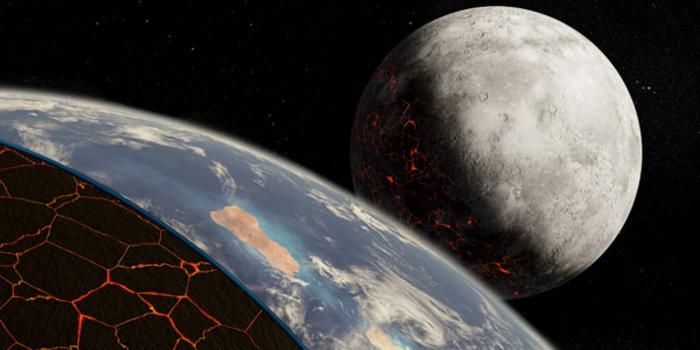A groundbreaking study published in Nature has challenged the long-held belief that plate tectonics is a prerequisite for the emergence of life on Earth.

Credit: University of Rochester illustration/Michael Osadciw
A groundbreaking study published in Nature has challenged the long-held belief that plate tectonics is a prerequisite for the emergence of life on Earth.
The study, which was done by examining detrital zircon crystals from the Barberton Greenstone Belt in South Africa, shows a lack of plate tectonics between 3.9 and 3.3 billion years ago – the time that life on Earth originated. South Africa is only one of three places in the world where zircon grains as old as 4 billion years old have been reported, with the other places being in Australia and India.
“Our study highlights the complex nature of Earth’s evolution and challenges the assumption that plate tectonics is the only path to habitability,” says Dr Jaganmoy Jodder from the Evolutionary Studies Institute, at the University of the Witwatersrand, South Africa. “By delving into the secrets these minuscule zircon crystals hold, we gain a deeper understanding of our planet’s origins and the potential for life beyond the boundaries of plate tectonics.”
The new findings in the study, titled “Hadaean to Palaeoarchaean stagnant-lid tectonics revealed by zircon magnetism” suggest that while plate tectonics is crucial for sustaining life on Earth, it is not an absolute requirement for the emergence of microbial life on planets similar to ours.
“Our data suggests that when we’re looking for exoplanets that harbour life, these planets do not necessarily need to have plate tectonics,” says Professor John Tarduno, the William R. Kenan, Jr. Professor of Geophysics, at the University of Rochester, United States of America, and the lead author of the study.
As a fundamental theory of geology, plate tectonics, the movement of Earth’s rigid outer shell, has been considered essential for facilitating heat transfer and enabling geological activities crucial for life.
By examining the “palaeointensity” of zircon grains from the Barberton Greenstone Belt, the researchers found that during the Hadean to Palaeoarchaean times (4 billion to 3.2 billion years ago), Earth did not experience mobile plate tectonics as it does today, but instead exhibited a phenomenon called a “stagnant lid regime”, where heat was released by through conduction and cracks in a solid, immobile crust that was covering the planet’s surface at the time. While the stagnant lid tectonics caused a less efficient heat transport and limited crustal recycling, it can still lead to continent formation.
Zircon crystals are rare minerals that act as time capsules, preserving information about Earth’s magnetic field from billions of years ago. Only a few places on Earth preserve ancient rocks that have not undergone significant deformations over several billion years throughout their geologic history. These are found in Archaean cratons namely the Kaapvaal (South Africa), Pilbara (Australia) and Singhbhum (India) cratons.
“By studying these tiny, rare detrital zircon minerals, we gain insights into Earth’s early geological past and the immense forces that have shaped our planet over billions of years,” says Jodder.
“It also paves the way for further research , providing valuable information to evaluate conditions on early Earth and investigate similar environments elsewhere. This is an exciting time to study early Earth conditions because defines conditions for the origin of life on Earth. Therefore, such studies will serve as the foundation for research on other planets/moons and elsewhere to be conducted by geologists, astrobiologists and geobiologists. For example, Enceladus, a moon of Saturn, harbours a “soda ocean”, with phosphorus, a key element for life.
A report on phosphorus from Enceladus was published in another Nature article on the same day, highlighting the close relationship between discoveries about the early Earth and planetary geology, all aimed at understanding the origin and potential for life in the Solar System.
Journal
Nature
Article Title
Hadaean to Palaeoarchaean stagnant-lid tectonics revealed by zircon magnetism




